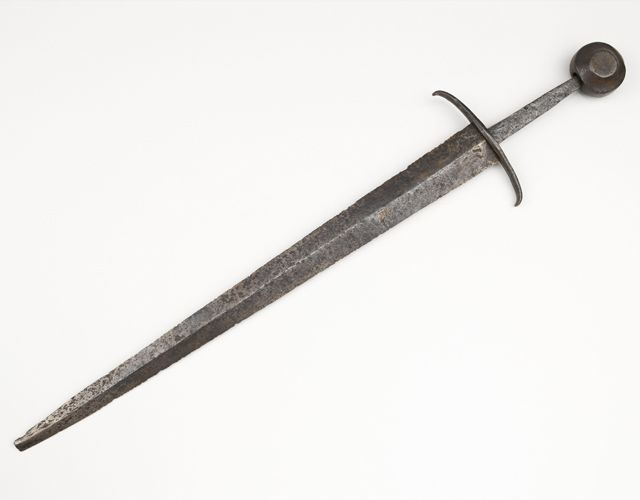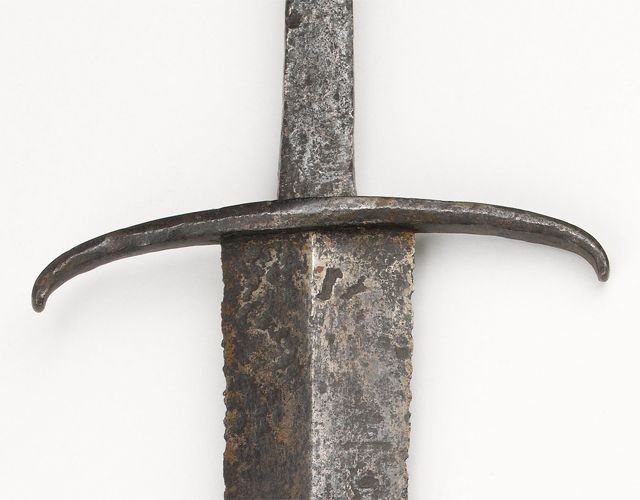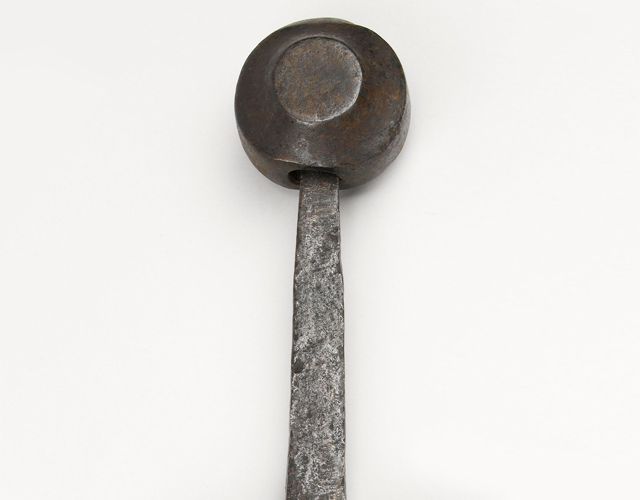French Oakeshott Type XV Sword for Infantryman
Nov 28, 2013 7:15:45 GMT
Post by Jack Loomes on Nov 28, 2013 7:15:45 GMT




I recently had a self righteous and indignant person clamour loudly at me that swords this length didn't exist after the 9th century. Not withstanding riding swords here below is a clear demonstration of a military sword from the 15th century at 29 inches, and examples such as this are common.
Furthermore I would like to draw attention to the weight. 1.6kg and more was both a common weight range and a usable weight range even for a sword on the shorter end of the spectrum - and this sword has clearly been excavated so it would have weighed at least 300 grams more. Unfortunately it has become common practice for a very small batch of excavated historical examples which are in the 1 - 1.25kg range to be quoted as normal range - but the persons who argue so vigourously that this was universally the case completely overlook the fact the examples they cite are both excavated (heavily corroded) and then vigorously cleaned - removing even more material and the grips are almost always lost too. This is not to say that lighter examples did not exist, but that a far broader range existed than is often given credit.
There are many European Medieval Swords which are not excavated however the vast majority are ceremonial or dress swords - and these tend towards the lighter end of the spectrum in the case of dress swords, and often to the extremely heavy for ceremonial examples. Neither are truly indicative of the swords that were intended to see combat as held in the hands of the fighting rank and file.
The above points illustrate the need for better fact checking. Just because some chumps in a forum circle j#$% about what is and is not fact - how often do they actually provide a wide selection of historical examples as proof as I have done on this site? Consensus on internet forums is no substitute for hard facts, real examples and plenty of them.
Editor's Note: Text below is digitally translated from original French by Google Translate.
Although it is characterized by an extreme formal simplicity, the sword remains, throughout the medieval period, invested with great symbolic. King of Castile and Leon Alfonso X the Wise (1221-1284) and establishes in his book Siete Partidas (Seven Parties) a close correspondence between the principal human virtues - wisdom, courage, strength and justice - and four components of the sword hilt, handle, guard and blade.
The sword remains yet despite this symbolic dimension, an extremely common tool away, as is sometimes thought, to be reserved for noble fighters. The copy presented here, strong and short, was probably for an infantryman. The quillons (picture 2) and the knob (picture 3) are made of bronze. The quillons, relatively short, turned to the point, now incomplete, while the imposing circular knob balance the heavy blade. The latter, triangular and rhombic section is reinforced by a strong middle ridge along its length. There are, in its center a trademark consisting of a rectangle surmounted by a crown (video 4). Hard, sharp and suitable for thrusting strokes, this weapon is scheduled to fight against an opponent with a "white armor".
Dating: Beginning of the fifteenth century
Author: Unknown
Materials: Iron and copper
Techniques: Wrought Iron
Place of creation: France (?)
Height (Length): 0.75 m (missing approximately 3 cm from tip)
Width: 0.16 m
Weight: 1.64 kg
No inventory: J 31
History: From the collections of the Museum of Artillery in 1880 after being part of the personal collection of Napoleon III in the castle of Pierrefonds.
Location in the museum (room name, no storefront): Arsenal
For more information on Oakeshott Type XV Swords see this extract from Ewart Oakeshott's Records of the Medieval Sword: sword-site.com/thread/166/oakeshott-type-records-medieval-sword
Source: www.musee-armee.fr/collections/base-de-donnees-des-collections/objet/epee-de-fantassin.html?tx_mdaobjects_object%5BidContentPortfolio%5D=921&cHash=7705ab676544c56655253ca28e68aaa9

.png?width=1920&height=1080&fit=bounds)